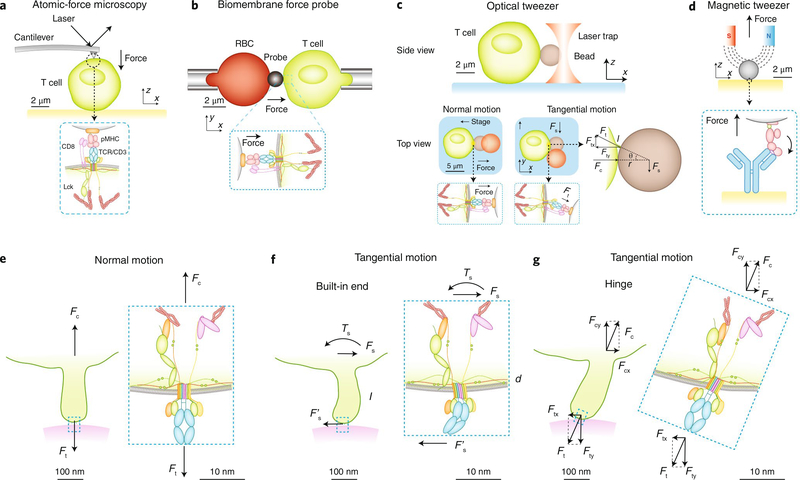Fig. 2 |. Single-molecule force techniques for applying forces to immuneoreceptors on immune cells.
a–d, Atomic-force microscopy (a), biomembrane force probes (b), optical tweezers (c) and magnetic tweezers (d) apply force to single receptors on cells and analyze the effects on receptor–ligand interactions, protein conformational changes and cellular functions. Atomic-force microscopy (a), biomembrane force probes (b) and magnetic tweezers (d) tend to apply force normal to the bead–cell (or substrate) interface by pulling them apart. Optical tweezers (c) apply a force Fs by moving the cell normally or tangentially relative to the bead–cell interface, pulling the receptor along the normal direction or an inclined direction with a force Ft. Ft is equal to Fs in the normal case but is larger than Fs in the tangential case. The mechanical analysis in the tangential case is similar to that in Fig. 1a. The inclined angle, determined by the relative dimensions of the microvillus length l and the bead radius r by the equation Ft = Fs/sin{cos−1[1/(1 + l/r)]}, is needed to generate both the normal force component Fty and tangential force component Ftx to balance the forces (Fc and Fs) and torques (Fty × r × sinθ and – Ftx × r × cosθ) on the bead. e, Normal motion of the T cell away from the substrate stretches the microvillus and pulls the TCR upward with a cell force Fc against the bond force Ft. f, Tangential motion of the T cell parallel to the substrate surface bends the microvillus and the TCR, assuming the root of the microvillus and the membrane anchor of the TCR can support bending moments (i.e., behave as a built-in end). g, If the microvillus root or the TCR membrane anchor, or both, behave(s) as a hinge incapable of supporting bending moment, the microvillus and/or the TCR would tilt to adjust its (their) orientation(s) to bear tension along its (their) long axis (axes).

